
recipe #20
Spatial Views
Note: these pages are no longer maintainedNever the less, much of the information is still relevant.Beware, however, that some of the command syntax is from older versions, and thus may no longer work as expected. Also: external links, from external sources, inside these pages may no longer function. |
 |
recipe #20 |
| 2011 January 28 |
| Previous Slide | Table of Contents | Next Slide |
|
SpatiaLite supports Spatial Views: any properly defined Spatial
View can then be used as any other map layer,
i.e. can be displayed using QGIS .
Please note: any SQLite VIEW can only be accessed in read-mode (SELECT); and obviously such limitation applies to any Spatial View as well (no INSERT, DELETE or UPDATE are supported). |
Using the query composer tool
spatialite_gui supports a query composer tool; in this first example we'll use exactly this one.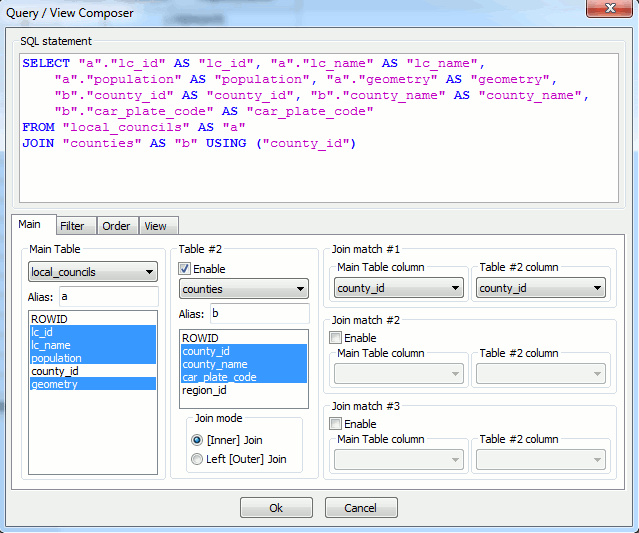
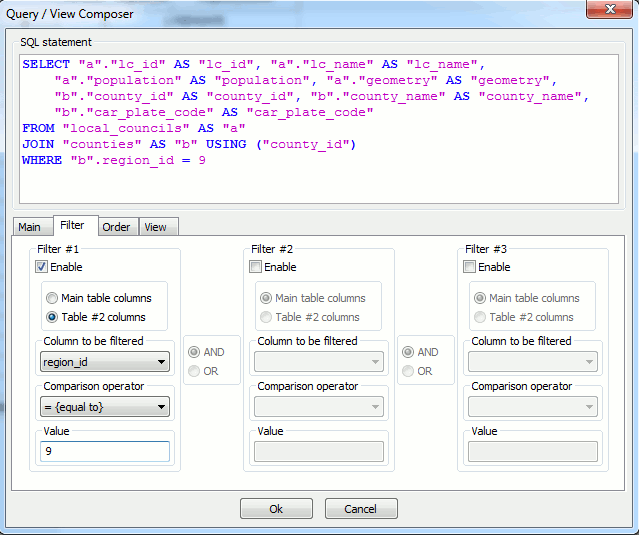
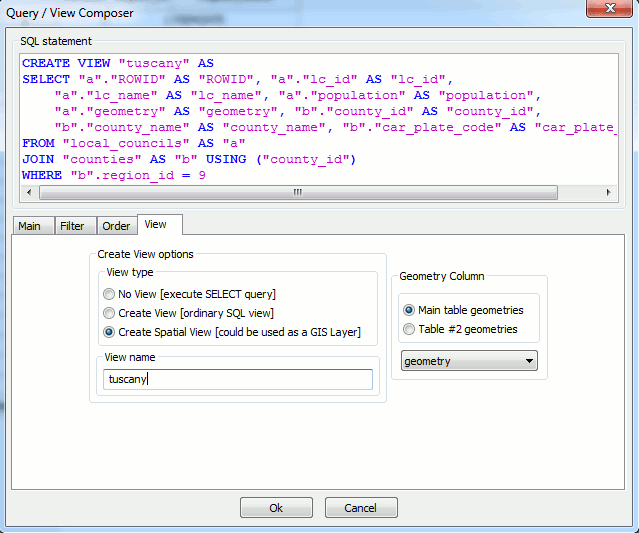
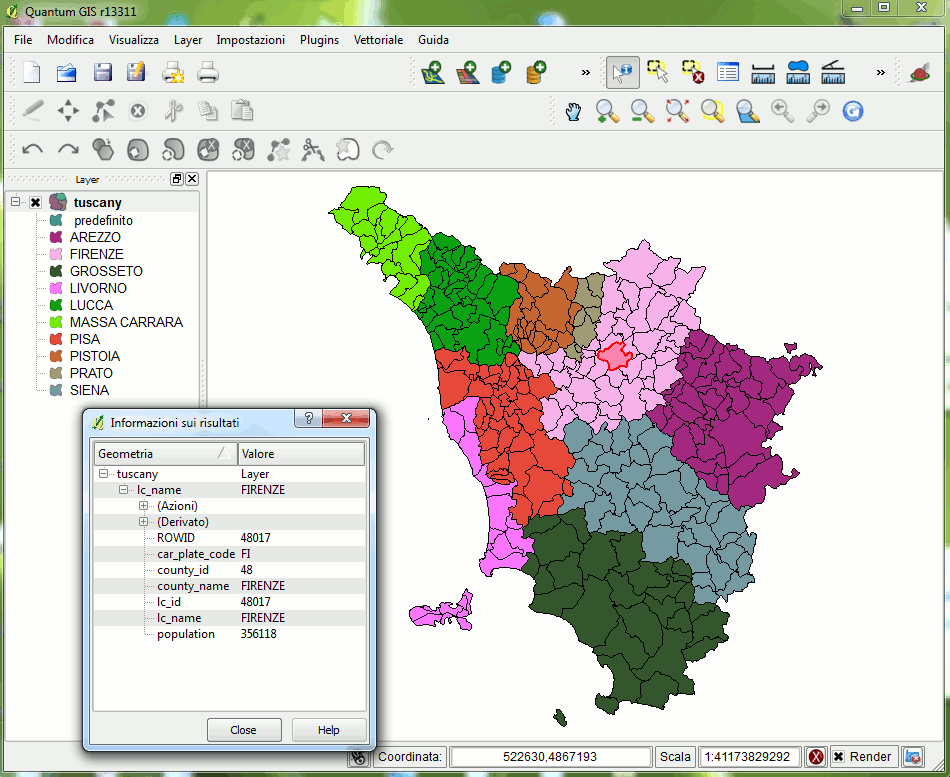
Hand-writing your own Spatial VIEW
|
CREATE VIEW italy AS SELECT lc.ROWID AS ROWID, lc.lc_id AS lc_id, lc.lc_name AS lc_name, lc.population AS population, lc.geometry AS geometry, c.county_id AS county_id, c.county_name AS county_name, c.car_plate_code AS car_plate_code, r.region_id AS region_id, r.region_name AS region_name FROM local_councils AS lc JOIN counties AS c ON (lc.county_id = c.county_id) JOIN regions AS r ON (c.region_id = r.region_id); |
|
INSERT INTO views_geometry_columns (view_name, view_geometry, view_rowid, f_table_name, f_geometry_column) VALUES ('italy', 'geometry', 'ROWID', 'local_councils', 'geometry'); |
|
SELECT * FROM views_geometry_columns; |
| view_name | view_geometry | view_rowid | f_table_name | f_geometry_column |
| tuscany | geometry | ROWID | local_councils | geometry |
| italy | geometry | ROWID | local_councils | geometry |
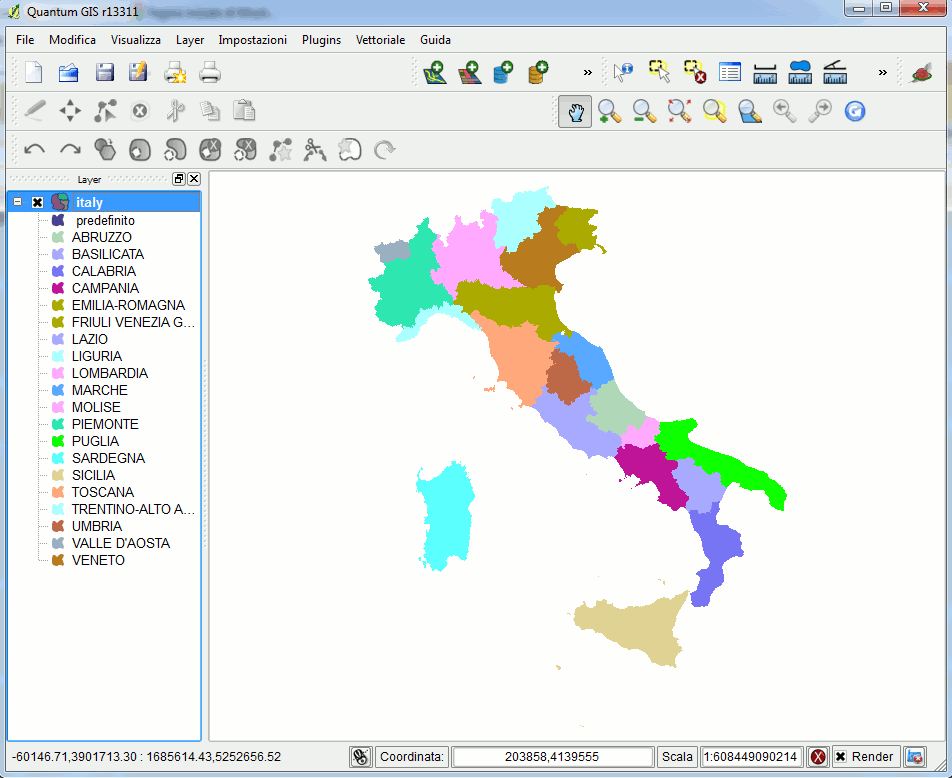
| Previous Slide | Table of Contents | Next Slide |

| Author: Alessandro Furieri a.furieri@lqt.it |
| This work is licensed under the Attribution-ShareAlike 3.0 Unported (CC BY-SA 3.0) license. | |
 |
Permission is granted to copy, distribute and/or modify this document under the terms of the GNU Free Documentation License, Version 1.3 or any later version published by the Free Software Foundation; with no Invariant Sections, no Front-Cover Texts, and no Back-Cover Texts. |